Jewish History: Holocaust
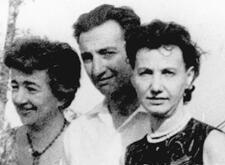
Vladka Meed
Vladka Meed was an underground courier who smuggled weapons to the Jewish Fighting Organization inside the Warsaw Ghetto while passing as a Christian outside its walls. In 1948 she published a memoir about her experiences, On Both Sides of the Wall. Meed received many awards for her work in Holocaust education and memorialization.
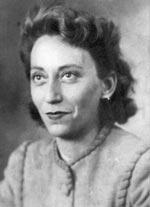
Jacqueline Mesnil-Amar
Jacqueline Mesnil-Amar struggled between her allegiance to French culture and her identity as a Jewish person. In her published journal, she perceptively documented the abandonment of French Jews during the Holocaust and the struggles of assimilated French Jews.

Hélène Metzger
Hélène Metzger was a French historian of chemistry and a philosopher of science, whose work remains influential today. Her independence and drive brought her great recognition, despite the lack of credibility given to her as a woman.
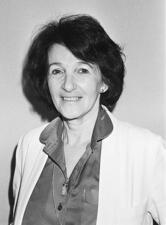
Marga Minco
Marga Minco (b. 1920) is a Dutch writer famous for her literary work relating to the Holocaust and for her economical use of words. Both topic and writing style have made her work unique.
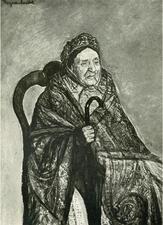
Regina Mundlak
Regina Mundlak was a skilled artist who exhibited her works in Warsaw at the Society for Promotion of Fine Arts and at the Aleksander Krywult Salon, and the Cassirer Salon in Berlin. She was interested in depicting Jewish life in the Diaspora, first through sketched portraits and later with oil paint. In 1942 she was probably deported from the Warsaw Ghetto to the Treblinka extermination camp.
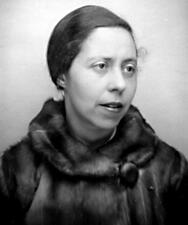
Irene Nemirovsky
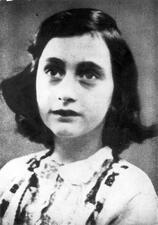
Modern Netherlands
Like Jewish women everywhere, Dutch Jewish women struggled with issues of assimilation, emancipation, and equality as both Jews and women. This article summarizes the conditions and challenges facing Jewish women in the Netherlands and the paths to progress and change they sought—education, work, activism, and literature, among others—from the nineteenth century to the present, including after the particular decimation of Dutch Jewry during the Holocaust.
Nelly Neumann
Nelly Neumann completed her doctorate in synthetic geometry in 1909 at Breslau University, making her one of the first women in Germany to obtain such a degree. In her lifetime she provided career guidance to female university students and worked as a secondary school teacher, tackling the intersection of philosophy and mathematics.
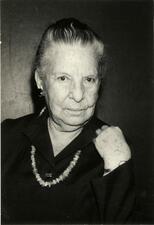
Miriam Novitch
Miriam Novitch was a member of the French Resistance during World War II and, after, an advocate for education on the Jewish resistance and the experiences of Holocaust survivors. She was one of the founders of the Itzhak Katzenelson Holocaust and Jewish Resistance Heritage Museum (also known as the Ghetto Fighter’s House, or GFH) and served as the curator for its art collection for many years.

Dalia Ofer
Dalia Ofer is an Israeli historian whose work mainly focuses on women’s experiences in the Holocaust and collective memory of the Holocaust in Israeli society. Ofer has published a multitude of books and articles on these topics during her career, and she has held positions at many prestigious universities around the world including the Hebrew University of Jerusalem, Harvard, Yale, and Columbia.
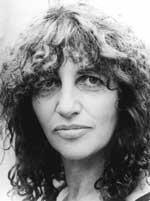
Ruth Peggy Sophie Parnass
Born in Germany, Ruth Peggy Sophie Parnass was sent to Sweden to escape the Nazis. Parnass became a journalist, actress, court reporter, feminist activist, and writer. Parnass combines her private and public lives in her writing, whether on her childhood under Nazi rule in Hamburg and as an exile in Sweden, on women's issues, or on political matters.

Erna Patak
Erna (Ernestine) Patak was a social worker and one of the Zionist veterans in Vienna in the early twentieth century, serving as the first president of WIZO Austria in the early 1920s. After surviving Theresienstadt, she returned to Vienna and later moved to London and finally to Tel Aviv.
Rivkah Perelis
Rivkah Perelis was a Polish-born historian whose research focused on the Holocaust and the Zionist youth movement during the Nazi occupation of Poland.
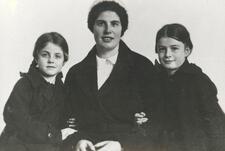
Clara Asscher Pinkhof
Clara Asscher Pinkhof dedicated her life and work to helping and advocating for Jewish children, initially as a teacher and later as an author. She is most known for her accounts of the experiences of Jewish children during the Nazi occupation.
Nora Platiel
The Russian Revolution of 1917 made a convinced socialist of Nora Block and inspired her to study law. After leaving Nazi Germany for France and then Platiel, Platiel returned home, eventually becoming the first woman director of a German district court and being elected for three terms in the Hessian State Parliament.
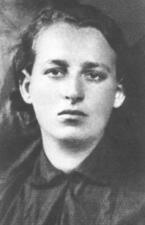
Frumka Plotniczki
Whether in her family, the kibbutz training program or the movement, what set Plotniczki apart was her ability to combine penetrating, uncompromising analysis with a loving heart and maternal compassion.
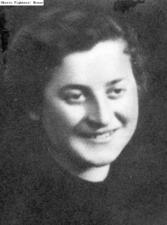
Hantze Plotniczki
Hantze Plotniczki was an active leader of and participant in resistance movements during World War II. She had a gift for connecting with people and inspiring love and action from other members of the movement.
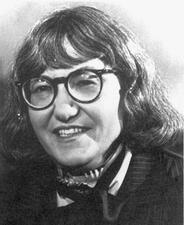
Poetry in the United States
Anna Sophia Polak
Anna Polak was an important figure in the Dutch women’s movement in the early twentieth-century, who served as director of the National Bureau of Women’s Labor in The Hague for 28 years. Her controversial views on the importance of involving women in the working world led to her international recognition; she was beloved and admired by many.
Poland: Interwar
A minority habitually ignored by scholars, Polish-Jewish women played important roles in the changing cultural and political framework of the interwar years.
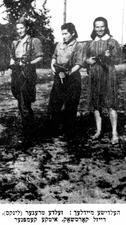
Poland: Women Leaders in the Jewish Underground During the Holocaust
There were prominent female leaders in nearly every Jewish underground in the Polish ghettos during WWII. Women often took on the role of delegate to central leadership, moving between ghettos. Jewish fighting organizations relied on these delegates to deliver arms, forged documents, and military instructions between ghettos.
Tamar De Sola Pool
Born into a family deeply involved in Jewish activism and scholarship, Tamar De Sola Pool spent over a decade as both a Hadassah chapter president and later Hadassah’s national president. She wrote two books in collaboration with her husband, volunteered at displaced persons camps in Cyprus, and helped resettle Jewish children in Palestine with Hadassah.
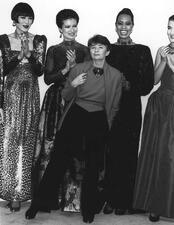
Lucie Porges
Lucie Porges brought a combination of elegance and a relaxed sensibility to her long and fruitful collaboration with top fashion designer Pauline Trigère. As she continued to design, Porges also imparted her immense knowledge in the Fashion Department of the New School for Social Research.
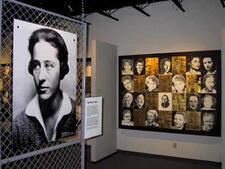
Olga Benário Prestes
A Communist activist before and during World War II, Olga Benário Prestes’ political activities led her to the highest ranks of the Communist Youth International. Her relationship with Brazilian Communist leader Luis Carlos Prestes, who was part of a failed coup, led to her deportation to Germany, where she was gassed at Bernburg in 1942. Although her name is not well known in the United States, Olga is famous in Brazil and was considered a great heroine in the German Democratic Republic.
Erna Proskauer
Erna Proskauer dreamed of becoming a judge in Germany but lost her job in 1933 and emigrated first to France and then to Palestine. After returning to Germany, Erna faced several setbacks in her quest to return to her career as a lawyer but ultimately opened her own firm. At the age of sixty-five, she took over her former husband’s law office and continued working for another twenty years.


